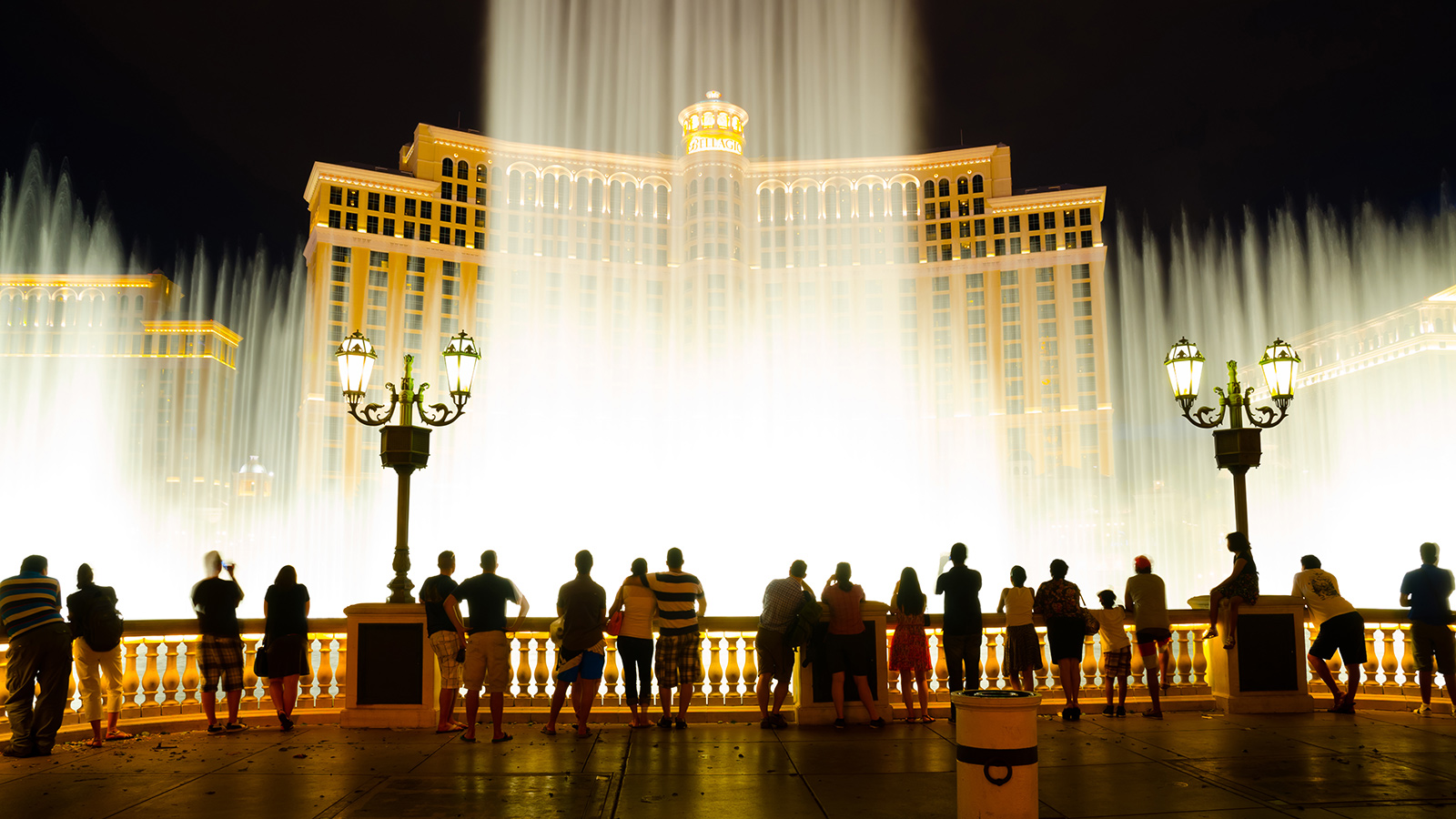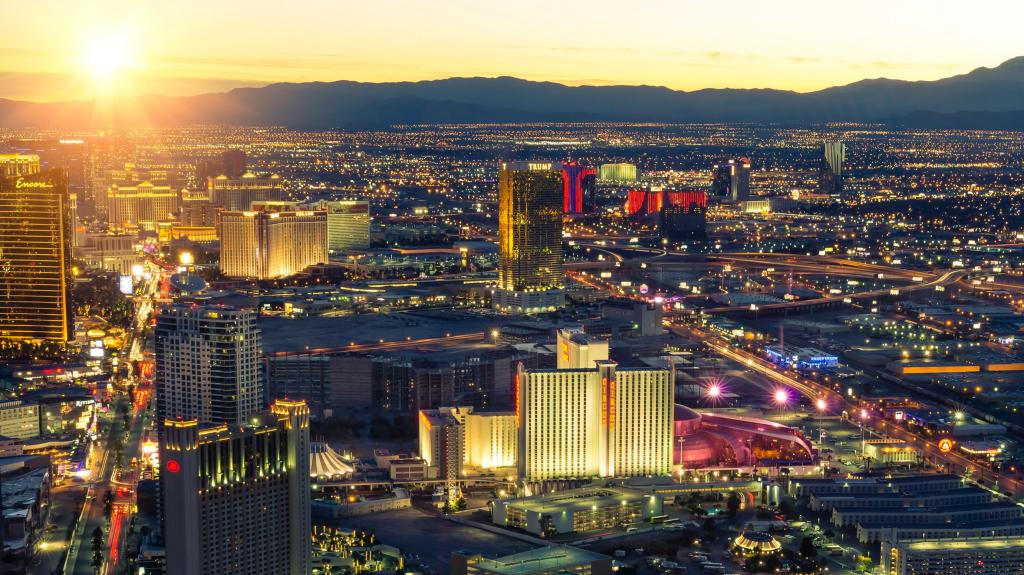The next time you stay out late in Las Vegas and inadvertently imbibe a few too many cocktails — an exceedingly unlikely scenario, I know — rest easy knowing that help is just a bus ride away. A ride on the hangover bus, that is.
Billed as a “45-foot rolling hangover treatment clinic,” the bus is staffed by a pack of nurses and EMTs under the supervision of Dr. Jason Burke, a board-certified anesthesiologist and founder of a business called Hangover Heaven. Burke’s team will pick you up, slide a tube into one of your veins, and ply you with “intravenous fluids, intravenous antinausea medicine, anti-inflamatories, and a proprietary blend of IV vitamins and antioxidants,” Dr. Burke explained in an interview with Nevada Public Radio.
Call it what you want: The ultimate (nonalcoholic) hair of the dog? A sinister plot to encourage overindulgence and keep us glued to the slot machines? Dr. Burke is no doubt laughing all the way to the bank.
Patricia Mulroy knows something about this sort of game. She played Dr. Hangover for the entire Las Vegas metro area for 25 years as general manager of the Southern Nevada Water Authority, which is responsible for keeping the taps running in the city and its suburbs. Those suburbs went on a major building binge in the 1990s and early aughts, and when they ran low on fluids, it was Mulroy’s job to spike another bag, as they say in the ER, and get the construction workers back in the game. She was incredibly good at it.
To understand what Mulroy was up against, there are a few things you need to know. First, Las Vegas sits in the Mojave Desert. The city gets, on average, 4.19 inches of rain each year. Second, while Vegas gets some of its water from the ground (it grew up around a cluster of springs), 90 percent of the stuff that pours out of city taps comes from the Colorado River, by way of Lake Mead, a reservoir east of the city.
Third — and here’s the crux — because Nevada was all mining camps and tumbleweeds back in the 1920s when the southwestern states divvied up the Colorado River, it got a pathetic 1.8 percent of the kitty, enough to supply only about 600,000 homes today. That wasn’t a problem back in 1990, when there were fewer than 750,000 people living in the Las Vegas metro area. But when the population proceeded to nearly double in a decade, then rocket to 2 million a decade after that? Problem.
To keep the water flowing, Mulroy cut deals with neighboring states (often with a good deal of arm twisting), “banked” water underground during wet years for use during dry ones, and stretched Southern Nevada’s limited supply much farther than it had been before. Between 2002 and 2012, her agency cut the region’s overall water consumption by a third at the same time the population grew by 400,000 people. It did this by paying residents to tear out their lawns, banning grass in the front yards of new homes, limiting grass in backyards, and putting strict limits on outdoor watering.
One reason Vegas was able to make such dramatic cuts was that it had been a profligate water waster, as my friend Jonathan Thompson wrote recently in High Country News: “Call it the Biggest Loser postulate, in which the fattest person to start out with has a lot more weight to lose.”
Nonetheless, it was a remarkable feat. And while there is still plenty of lawn, and plenty of wasted water, in this town (more than half of the water in Southern Nevada still goes to outdoor landscaping), contrary to recent reports, Southern Nevada’s water use is now comparable to California’s, and significantly more efficient if you factor in the water Nevada uses more than once*: Vegas returns treated wastewater to Lake Mead, which it then pumps back out, treats again, and reuses. (That system comes with its own inefficiencies, but it’s a foray into the type of “toilet-to-tap” recycling system that is becoming more commonplace in this part of the world.)
Golf courses are kept green with treated wastewater as well. And before you go ranting about the musical geysers in front of the Bellagio, the water authority’s conservation manager, Doug Bennett, is quick to point out that the Strip consumes less than 3 percent of the region’s water, while generating 70 percent of its economy. “That’s a pretty good investment,” he says.
Mulroy retired from the water authority this winter, and looking back on her 25 years at the agency, you could say that she played the enabler for some pretty unhealthy behavior. But as with the hangover bus, it’s hard to deny the genius of it. Mulroy made Las Vegas a major player in a world of water politics where it once had little standing. And she ultimately scraped together enough water to support a major metropolis in the desert, at least for the time being.
There was one front where Mulroy was not able to deliver, however, despite years of trying. From her first years at the water authority, she pushed a proposal to pump groundwater from beneath rural parts of eastern and central Nevada. The proposal has met fierce opposition — most recently in the form of federal lawsuits filed by rural counties, Indian tribes, and environmentalists — and for the time being, appears to be stalled.
In the future, water wonks imagine desalination plants in California producing water that can either be traded for that state’s Colorado River water, or pumped directly to Vegas. But that is an astronomically expensive prospect, and still many years out, at best.
In the meantime, without that big IV bag in Eastern Nevada, Las Vegas will need to cut back even more on its drinking — or, rather, its lawn-watering. The Colorado River Basin has been hit with an epic drought over the past 14 years, and Lake Mead is dipping perilously low. California water agencies have already begun cutting deliveries to some cities and farms, and austerity measures could kick in region-wide later this year. The long-term forecast, which I’ll write more about later in this series, doesn’t look promising, either.
In a sign of changing times, Mulroy’s successor, John Enstminger, laid off 101 employees earlier this month, and announced that the water authority would shift its focus away from enabling growth, and instead to maintaining what is already in place.
It wasn’t a lack of water that forced that change, however. For that, it took the considerable efforts of a bunch of greedy monkeys on Wall Street. Stay tuned for that story.
* Notes on the numbers, for the water geeks out there:
– “Southern Nevada’s water use is now comparable to California’s…”
Last year, Southern Nevada residents used, on average, 212 gallons of water per person per day, according to the Southern Nevada Water Authority. The California Department of Water Resources reports that California’s average was 192 gallons — but that includes dense (and far wetter) cities such as San Francisco, which use significantly less than the state average.
– “…and (Vegas is) significantly more efficient (than California as a whole) if you factor in the water Nevada uses more than once.”
Comparing Nevada to California is tricky because the states calculate water use differently. But if Las Vegas were in California, its daily per-person water use would be reported as just 124 gallons. That’s because, of the 212 gallons each Las Vegas resident uses per day, 88 gallons are recycled and used again.
– “The Strip consumes less than 3 percent of the region’s water.”
According to the water authority’s Bennett, “resorts use 7.7 percent of our total water deliveries.” They only “consume” a quarter of that water, however. The rest is treated for reclamation and reuse. (It’s the difference between gross and net water use.) “Since these numbers have room to fluctuate slightly each year,” Bennett says, “we’ve typically said ‘less than 3 percent.’”
– “Between 2002 and 2012, [the Southern Nevada Water Authority] cut the region’s overall water use by a third at the same time the population grew by 400,000 people.”
Here’s a more recent (and accurate) figure: In 2002, the region consumed about 106 billion gallons. By 2013 that number was down to about 74 billion gallons — a 30 percent drop — thanks in no small part to water recycling, which brings consumption, or net use, down.
– “More than half of the water in Southern Nevada goes to outdoor landscaping.”
I’d originally said that “almost a third of the water in Southern Nevada still goes to grass.” In fact, the number is much higher, says Bennett, although it includes trees, shrubs, cacti, etc. The upshot: There’s still a lot more Vegas can do to make better use of its precious water.
– And finally, speaking of precious, I had originally said that Nevada’s share of the Colorado River was “a pathetic 4 percent.” I overspoke. It’s actually 1.8 percent.



